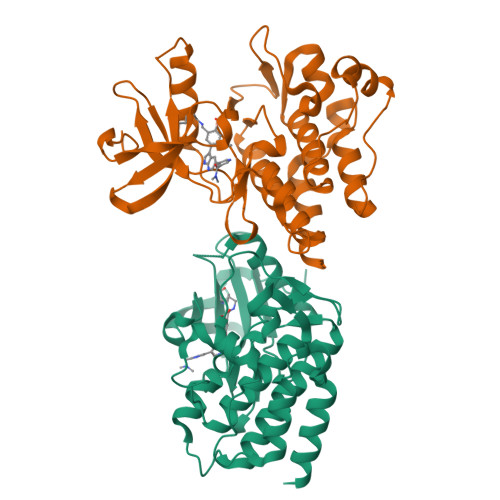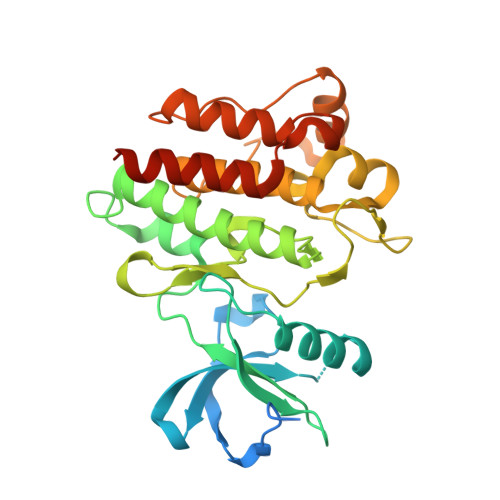Strategic Design of Catalytic Lysine-Targeting Reversible Covalent BCR-ABL Inhibitors*.
Quach, D., Tang, G., Anantharajan, J., Baburajendran, N., Poulsen, A., Wee, J.L.K., Retna, P., Li, R., Liu, B., Tee, D.H.Y., Kwek, P.Z., Joy, J.K., Yang, W.Q., Zhang, C.J., Foo, K., Keller, T.H., Yao, S.Q.(2021) Angew Chem Int Ed Engl 60: 17131-17137
- PubMed: 34008286
- DOI: https://doi.org/10.1002/anie.202105383
- Primary Citation of Related Structures:
7CC2, 7DT2 - PubMed Abstract:
Targeted covalent inhibitors have re-emerged as validated drugs to overcome acquired resistance in cancer treatment. Herein, by using a carbonyl boronic acid (CBA) warhead, we report the structure-based design of BCR-ABL inhibitors via reversible covalent targeting of the catalytic lysine with improved potency against both wild-type and mutant ABL kinases, especially ABL T315I bearing the gatekeeper residue mutation. We show the evolutionarily conserved lysine can be targeted selectively, and the selectivity depends largely on molecular recognition of the non-covalent pharmacophore in this class of inhibitors, probably due to the moderate reactivity of the warhead. We report the first co-crystal structures of covalent inhibitor-ABL kinase domain complexes, providing insights into the interaction of this warhead with the catalytic lysine. We also employed label-free mass spectrometry to evaluate off-targets of our compounds at proteome-wide level in different mammalian cells.
Organizational Affiliation:
NUS Graduate School for Integrative Sciences and Engineering, 21 Lower Kent Ridge, University Hall, Tan China Tuan Wing, #04-02, Singapore, 119077, Singapore.




















